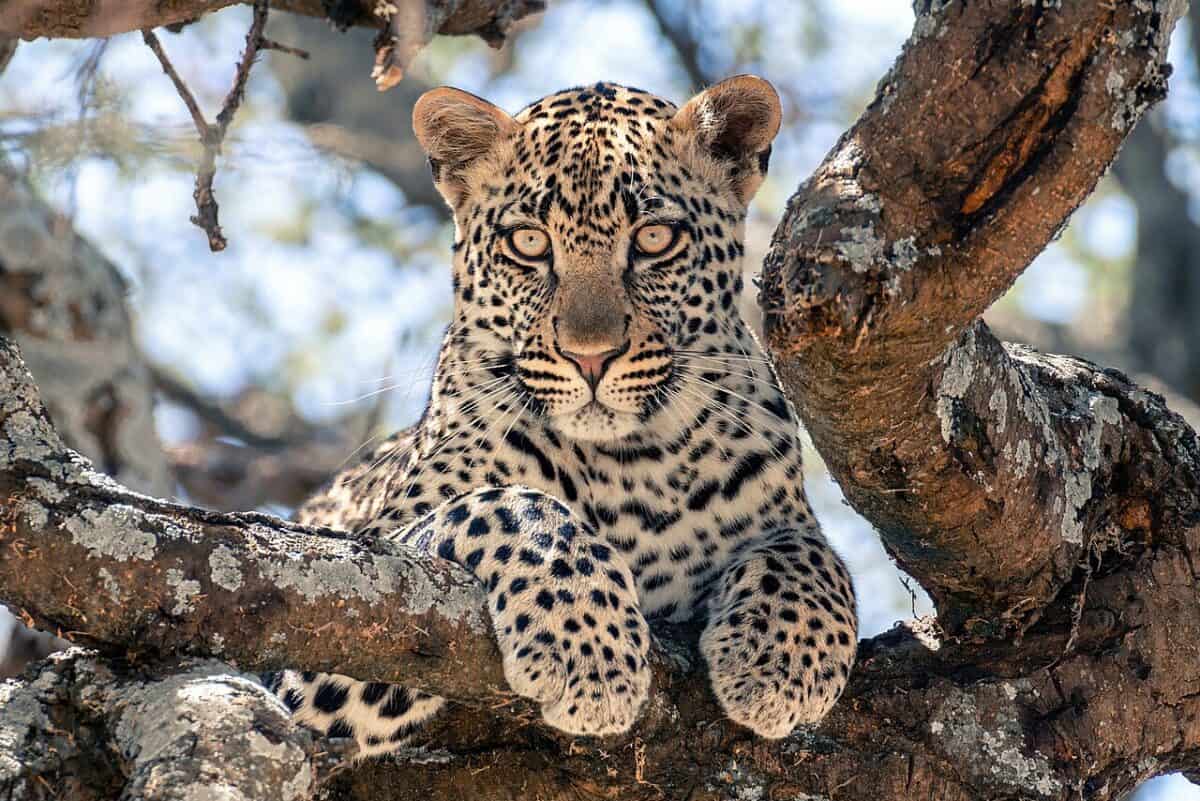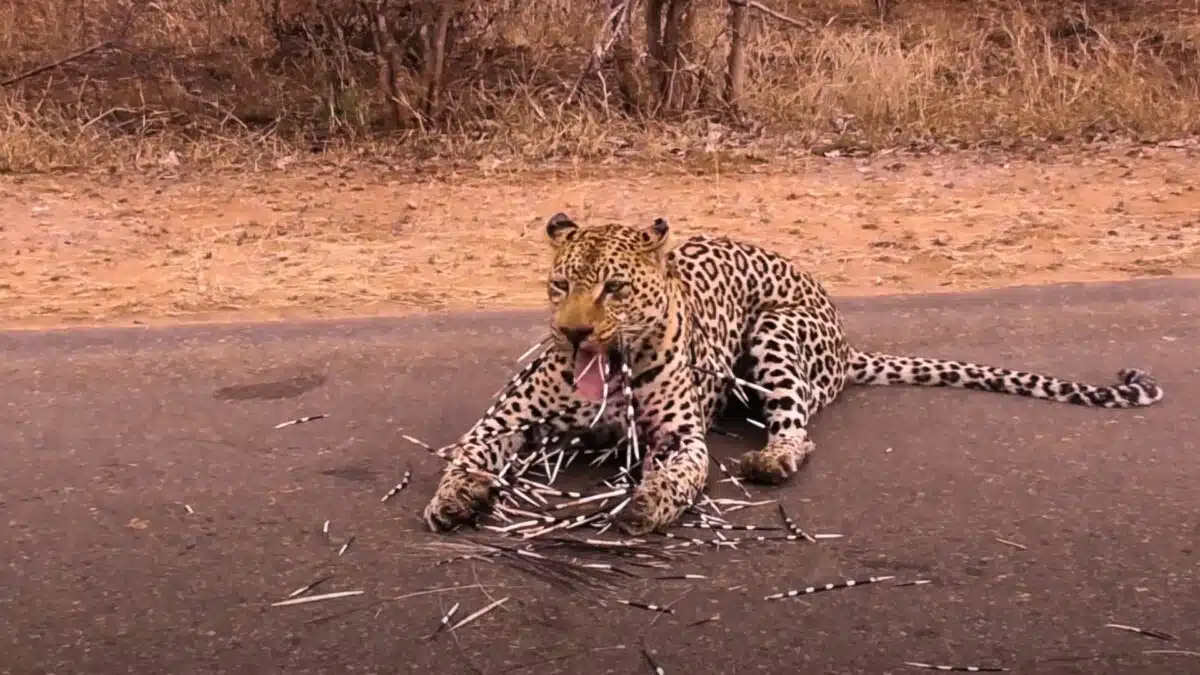This leopard is literally licking its wounds in an attempt to heal its severe injuries following a porcupine fight. Despite being one of the most fearsome predators on the African savannah, this powerful feline is far from invisible.
Leopard Recovers From a Porcupine Fight

The video documents a leopard dealing with the painful consequences following a fight with a porcupine. Numerous painful porcupine quills are embedded in its face, paws, and chest. It attempts to remove these quills using its teeth, a task proving almost difficult.
Spikey Situation

Despite its efforts, it’s only able to remove a fraction of the spikes. We can only imagine the amount of pain it is in as it walks away with a limp, and we’re left wondering if it will ever recover from this spikey situation.
A Porcupine’s Sharp Defensive Tactic

Porcupines, often perceived as slow and harmless, possess an effective defense mechanism: their spikes. When threatened, they raise these quills, which are actually modified hairs, making them appear larger and more intimidating. These quills can easily detach and embed themselves in the flesh of predators, causing severe pain and potential infections.
How Long Are Porcupine Spikes?

Porcupine quills vary in size, but they can be remarkably long, with some reaching lengths of up to 12 inches. These quills are not just long; they are also barbed, making them difficult to remove once embedded.
Will the Leopard Survive Its Wounds?

Leopards are known for their resilience and adaptability, but the severity of such injuries raises concerns about survival.
Possible Threats

Infections and mobility issues are immediate threats. However, leopards have remarkable healing abilities and are adept at caring for their wounds. The chances of survival depend on the depth and number of quills, as well as the leopard’s overall health and ability to continue hunting.
Literally Licking Its Wounds

After the encounter with the porcupine, the leopard instinctively licks its wounds, a natural behavior observed in many wild animals. This action serves multiple purposes: it cleans the wound, helping to remove debris and reduce the risk of infection, and the enzymes in the saliva can promote healing. Additionally, licking can provide a measure of pain relief.
Do Porcupines Regrow Their Spikes?

An interesting aspect of porcupine biology is their ability to regrow lost quills. These quills are essentially specialized hairs and, much like human hair, they can grow back over time.
This regeneration ensures that porcupines are never left defenseless for too long, maintaining their primary defense mechanism throughout their lives.
The Porcupine’s Enemy #1

While porcupines have few natural predators due to their formidable defense, they are occasionally preyed upon by animals like leopards and large birds of prey. These predators have developed techniques to attack porcupines without getting harmed, usually targeting their unprotected underbellies.
The Footage

Watch the video here.
Leopard Recovers From Porcupine Fight: Wrapping Up

This video has shown us the aftermath of an attempted attack on a porcupine, and we can only hope that the leopard learned its lesson. The leopard is often applauded as one of the most powerful predators, but in this case, we should also credit the porcupine’s genius (and painful) means of defense.
Next In Animal News

Thank you for reading this article about the leopard licking its wounds following a fight with a porcupine! If you’re in the mood for more leopard news, take a look at these posts:
- Watch: Leopard Saves Eagle Constricted by Black Mamba
- Watch: Leopard Jumps from 9 Metres in a Risky Prey Ambush
- Interrupted Sleep: Leopard Narrowly Escapes Lions
Join our Forum for free today!

- Leopard Comes Second In Fight Porcupine - June 29, 2024
- Man Caught Keeping Snakes in His Pants at Miami Airport Shocks TSA - June 28, 2024
- Incredibly Intelligent Monkey Takes Himself to Hospital For Treatment in Bangladesh - June 28, 2024

